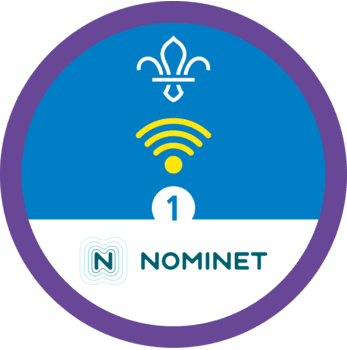
All the rights moves
You’ll need
- Scrap paper
- Pens or pencils
- Bowls
Before you begin
- The person leading the activity should cut up a set of 'Rights of the child' for each team. Place each set into a bowl at one end of your meeting place.
Know your rights!
- The person leading the activity should show everyone the Yellow Card. They should explain that it’s Scouts’ code of practice to keep everyone safe and go through what it says.
- Remind everyone that there’s a set of rights that all children throughout the world share called the ‘Rights of the Child’.
- The person leading the activity should ask everyone if they know any of these rights or if they can think what they might be.
Many schools across the UK take part in the Rights Respecting Schools scheme so some young people may already have a good understanding of their rights. Start with some rights that might seem more obvious to the group, such as the right to clean water, the right to relax and have fun.
Make all the rights moves
- Everyone should get into groups of six. If groups are smaller, team members may have to run again. Groups will work together to run and fetch all the pieces of their rights jigsaw before putting them together to form a sentence.
- The groups should stand at the opposite end of the meeting space to the sentence pieces and on ‘go’ the first team member in each group should run to their bowl and take out a piece of their rights jigsaw before returning to their team.
- The second person runs to the bowl to get another piece of the jigsaw and so on until the team has all six parts of their sentence.
- Once the group has all the parts, they must stand in the correct sentence order with their piece of paper facing forwards.
The person leading the activity or other helpers can check and help teams form their sentence correctly and make sure that each team member has read and understands their sentence.
- Once each team has formed their sentence correctly and a helper has checked it’s correct, the group should work together to make a tableau explaining that right.
A tableau is like a human painting or a photograph. Each team member stands in a position that explains their right. For example, for Article 17 (every child has the right to get information) team members could pretend to read a newspaper, use a computer or share a book. Create an interesting composition together and then hold still like for a photograph.
- Each team should show their tableau to the rest of the group. Can the groups guess the right or different parts of that right? Each group should then read their sentence out together.
- Everyone should talk as a whole group about what each right might look like online and make a list.
For example, Article 23 (every child with a disability) means that any child with a disability should be able to have the equipment and support to engage online. Article 36 (children should be protected from exploitation) means that children should be safe online and be able to report anything that worries them.
- Congratulate everyone on knowing and understanding some of their rights as a child.
Reflection
This activity was a fun way of looking at some of the UNCRC rights of the child and thinking about what this means both offline and online. The person leading the activity should remind everyone that they always have the right be safe from harm and should always tell a trusted adult if they’re scared or worried. At Scouts we also have our Yellow Card so that everyone knows the actions they can take to keep each other safe in person, or online. Remind everyone that they also have a responsibility that goes with each right. This means that if you have the right to share your opinions, you should make sure your opinions are respectful or if you have the right to get information from the internet, make sure that information is accurate and safe. These rights are designed to make sure that every child is able to grow up to be the best they can be.
Safety
All activities must be safely managed. You must complete a thorough risk assessment and take appropriate steps to reduce risk. Use the safety checklist to help you plan and risk assess your activity. Always get approval for the activity, and have suitable supervision and an InTouch process.
- Active games
The game area should be free of hazards. Explain the rules of the game clearly and have a clear way to communicate that the game must stop when needed. Take a look at our guidance on running active games safely.
If the group is familiar with the rights, you could add in extra challenge by mixing up the different rights in one bowl. Put a small hint on each piece like a dot of colour or a coloured sticker.
Make sure that everyone can access the game, whether this means slowing the pace so no one needs to run, or having larger print pieces. Anyone who doesn’t want to run in the game could be in charge of helping to put the sentences in the right order.
All Scout activities should be inclusive and accessible.
Use the tableaux as a starting point for some dramas that illustrate some of the rights. Everyone could practice the dramas and use them to complete part of the Cubs Entertainer Activity Badge.
